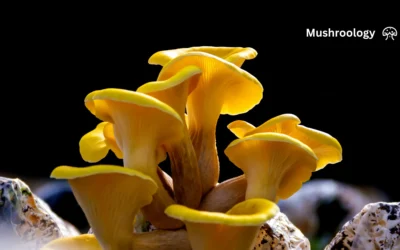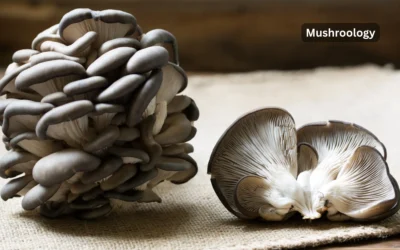What you need to know about mushroom bag cultivation
You’ve probably wondered if you can grow fresh mushrooms at home without expensive equipment. Here’s what works: mushroom bag cultivation offers one of the most reliable methods for producing oyster, shiitake, lion’s mane, and other gourmet mushrooms. Based on research from Cornell University’s Small Farms Program and cultivation experts like Paul Stamets, this method yields 1-2.5 pounds (0.45-1.13 kg) per bag.
Why you should grow mushrooms in bags
When you’re starting mushroom cultivation, bags offer several advantages over other methods. North American Mycological Association (NAMA) recommends bag cultivation for beginners because it reduces contamination risks by 50-70% compared to open-air methods. You’ll need less space than log cultivation and can harvest mushrooms in 2-4 weeks instead of waiting 6-12 months.
According to research from Penn State Extension, bag cultivation produces the highest biological efficiency—the ratio of fresh mushrooms to dry substrate weight. You can achieve 100-200% biological efficiency with properly prepared bags, meaning 5 pounds (2.3 kg) of substrate can yield 5-10 pounds (2.3-4.5 kg) of fresh mushrooms.
What makes bag cultivation different
You control every aspect of the growing environment when you use bags. The filter patch technology allows gas exchange while preventing contamination. These specialized polypropylene bags withstand sterilization temperatures of 250°F (121°C) without melting, as confirmed by Unicorn Bags.
Here’s what experienced growers know: Filter patch size matters. Use 0.2 micron filters for aggressive species prone to contamination. Choose 0.5 micron filters for oyster mushrooms that need more air exchange. The 5 micron filters work for straw-based substrates but increase contamination risk by 30-40%.
How you select the right mushroom species for bags
Not all mushrooms grow equally well in bags. Based on yield data from FreshCap Mushrooms and commercial growers, here are your best options:
Oyster mushrooms (Pleurotus species):
- Yield: 1-2.5 pounds (0.45-1.13 kg) per 5-pound (2.3 kg) bag
- First flush in 7-14 days
- Biological efficiency: 50-150%
- Temperature range: 55-80°F (13-27°C)
Shiitake mushrooms (Lentinula edodes):
- Yield: 1.5-2.5 pounds (0.68-1.13 kg) per bag
- First flush in 45-60 days
- Biological efficiency: 100-200%
- Optimal temperature: 55-75°F (13-24°C)
Lion’s mane mushrooms (Hericium erinaceus):
- Yield: 1.5-2 pounds (0.68-0.91 kg) per bag
- First flush in 14-21 days
- Biological efficiency: 90-140%
- Fruiting temperature: 65-75°F (18-24°C)
Understanding substrate requirements
Your substrate choice directly impacts yields. The “Master’s Mix” developed by TR Davis from Earth Angel Mushrooms combines equal parts hardwood sawdust and soybean hulls. This mixture consistently produces the highest yields according to Fungi Ally research.
What you need to prepare mushroom growing bags
You’ll need specific materials and equipment for successful bag cultivation. Here’s your essential list based on Cornell’s Seven Stages of Cultivation:
- Autoclavable polypropylene bags with filter patches
- Substrate (sawdust, straw, or supplemented mixtures)
- Mushroom spawn (grain or sawdust)
- Gypsum (calcium sulfate) for pH buffering
- Water
Equipment:
- Pressure cooker or autoclave reaching 15 PSI
- Scale for measuring ingredients
- Mixing container
- Heat sealer or zip ties
- Spray bottle for misting
- Thermometer and hygrometer
How you calculate substrate moisture content
Proper moisture content determines your success. According to Atlas Scientific, substrates need 50-70% moisture content. Here’s the calculation:
- Weigh your dry substrate
- Add water at 60-65% of dry weight
- Mix thoroughly and squeeze test
- Only 1-2 drops should come out when squeezed
For example: 10 pounds (4.5 kg) dry sawdust needs 6-6.5 pounds (2.7-2.9 kg) of water, which equals about 0.7-0.8 gallons (2.6-3 liters).
How to sterilize mushroom bags properly
Sterilization kills competing organisms that would otherwise contaminate your bags. Paul Stamets’ research and university studies confirm these requirements:
Temperature: 250°F (121°C) Pressure: 15 PSI Time: 90-120 minutes for 5-pound (2.3 kg) bags
Safety Warning
- Never leave bags unattended in pressure cooker
- Keep bags away from metal sides using jar rings
- Allow complete pressure release before opening
- Bags touching the bottom or sides may melt
The Shroomery community recommends wrapping bags in aluminum foil to prevent melting. Place jar rings between bags to ensure steam circulation.
Critical sterilization mistakes to avoid
You risk contamination if you rush sterilization. Common errors include:
- Overfilling bags past the filter patch
- Sealing 0.2 micron bags before sterilization (they’ll burst)
- Insufficient sterilization time
- Opening the pressure cooker too soon
When and how you inoculate mushroom bags
Timing matters when you inoculate. Wait until bags cool to 70-80°F (21-27°C) before adding spawn. Higher temperatures kill the mycelium.
Inoculation rates from Cornell research:
- High rate (safer): 1 pound spawn per 4 pounds substrate (20%)
- Standard rate: 1 pound spawn per 10 pounds substrate (10%)
- Low rate (risky): 1 pound spawn per 20 pounds substrate (5%)
You’ll see faster colonization with higher spawn rates. The trade-off? Higher spawn costs reduce profit margins by $0.25 per pound of mushrooms.
Best practices for contamination prevention
North Spore’s contamination guide identifies Trichoderma as the most common contaminant. Prevent it by:
- Working in still air or using a flow hood
- Flame-sterilizing tools between bags
- Using 70% isopropyl alcohol on surfaces
- Washing hands thoroughly
- Avoiding drafts during inoculation
How you manage colonization and fruiting
After inoculation, place bags at optimal colonization temperatures. Most species colonize best at 70-75°F (21-24°C). Full colonization takes:
- Oyster mushrooms: 10-14 days
- Shiitake mushrooms: 45-90 days
- Lion’s mane: 14-21 days
Monitor these conditions:
- Temperature: Use digital thermometer
- No light needed during colonization
- Check for contamination daily
- Don’t disturb bags unnecessarily
Initiating mushroom fruiting from bags
You trigger fruiting by changing environmental conditions. Cut 2-4 inch (5-10 cm) X-shaped slits in the bag where you see pins forming. According to North Spore’s ShroomTek guide:
Fruiting requirements:
- Temperature drop: 5-10°F (3-6°C)
- Humidity: 80-95%
- Fresh air exchange: 4-8 times per hour
- Light: 12 hours daily (reading-level intensity)
- CO2: Below 1,000 ppm
Mist the slits 2-3 times daily. You’ll see pins in 3-7 days.
Why contamination happens and how you prevent it
Green mold (Trichoderma) ruins more bags than any other contaminant. Research from PMC’s contamination study shows sterilized substrates remain most vulnerable during spawning.
Contamination appears as:
- Green sporulation (Trichoderma)
- Orange/pink growth (Neurospora)
- Black spots (Aspergillus)
- Slimy, sour-smelling areas (bacterial)
If you spot contamination, remove the bag immediately. Don’t open contaminated bags indoors—spores spread everywhere. The Fungi Academy recommends burying contaminated bags in your garden.
Advanced contamination prevention strategies
Professional growers use these methods:
- HEPA filtration in growing rooms
- Positive pressure environments
- UV-C sterilization between crops
- pH adjustment to 6.0-6.5
- Prophylactic peroxide treatment
How to maximize your mushroom yields
You can harvest multiple flushes from each bag. The circular economy research shows proper management extends production:
First flush: 50-60% of total yield Second flush: 25-30% of total yield Third flush: 10-15% of total yield
Between flushes, let bags rest 7-14 days. For shiitake, soak blocks in cold water for 12-24 hours to trigger the next flush.
Troubleshooting common growing problems
When mushrooms don’t develop properly, check these factors:
Long, thin stems: Increase fresh air exchange Small caps: Lower CO2 levels below 800 ppm Dry, cracked caps: Raise humidity to 85-90% Slow growth: Check temperature ranges Yellow mushrooms: Reduce light exposure
What happens to spent mushroom bags
After 2-3 flushes, your substrate becomes “spent.” But don’t throw it away. Penn State’s spent substrate guide shows this material improves garden soil.
Uses for spent substrate:
- Garden compost addition
- Mulch for acid-loving plants
- Worm bin food
- Livestock bedding supplement
- Second-run mushroom cultivation
The sustainability research indicates over 100 million tons of spent substrate need recycling annually.
Economic considerations for bag cultivation
Your costs per 5-pound (2.3 kg) bag:
- Substrate materials: $1.50-3.00
- Spawn: $2.00-4.00
- Bag: $0.50-1.00
- Utilities: $0.50-1.00
- Total: $4.50-9.00
With 1.5 pounds (0.68 kg) average yield selling at $10-16 per pound, you’ll gross $15-24 per bag.
Frequently asked questions about mushroom bag cultivation
Q: How long do mushroom bags take to produce mushrooms? A: Most oyster mushrooms fruit within 10-14 days after inoculation. Shiitake takes 45-90 days. Lion’s mane produces in 14-21 days at 65-75°F (18-24°C).
Q: What’s the best filter patch size for beginners? A: Start with 0.5 micron filter patches. They balance contamination prevention with adequate gas exchange. You’ll need about 1 filter per 5 pounds (2.3 kg) of substrate.
Q: Can you reuse mushroom grow bags? A: No, don’t reuse bags after mushroom production. The plastic weakens during sterilization and harbors contaminants. Fresh bags cost $0.50-1.00 and ensure success.
Q: Why do my mushroom bags keep getting contaminated? A: Check your sterilization time and temperature first. Ensure 90-120 minutes at 250°F (121°C). Also verify spawn quality and improve sterile technique during inoculation.
Q: What size bags work best for home cultivation? A: Use bags measuring 8″ x 5″ x 18″ (20 x 13 x 46 cm) for 5-pound (2.3 kg) blocks. You can fit 6 bags in a standard 23-quart pressure canner.
Helpful resources for mushroom bag growers
- North American Mycological Association (NAMA)
- Cornell Small Farms Mushroom Program
- Penn State Extension Mushroom Production
- Paul Stamets’ Fungi Perfecti
- “Growing Gourmet and Medicinal Mushrooms” by Paul Stamets
- “Organic Mushroom Farming and Mycoremediation” by Tradd Cotter
- Mycological Society of America





